I’d always imagined it would be expensive doing a safari in Africa. While some safari experiences in different countries certainly can be expensive, it doesn’t have to be that way.
Shae and I recently spent a week doing a self-drive safari at Kruger National Park in South Africa which was a fantastic – and very reasonably-priced – experience. In case it’s something that appeals to you, here are 13 tips we have for a successful self-drive safari at Kruger National Park.
1) Rent An SUV
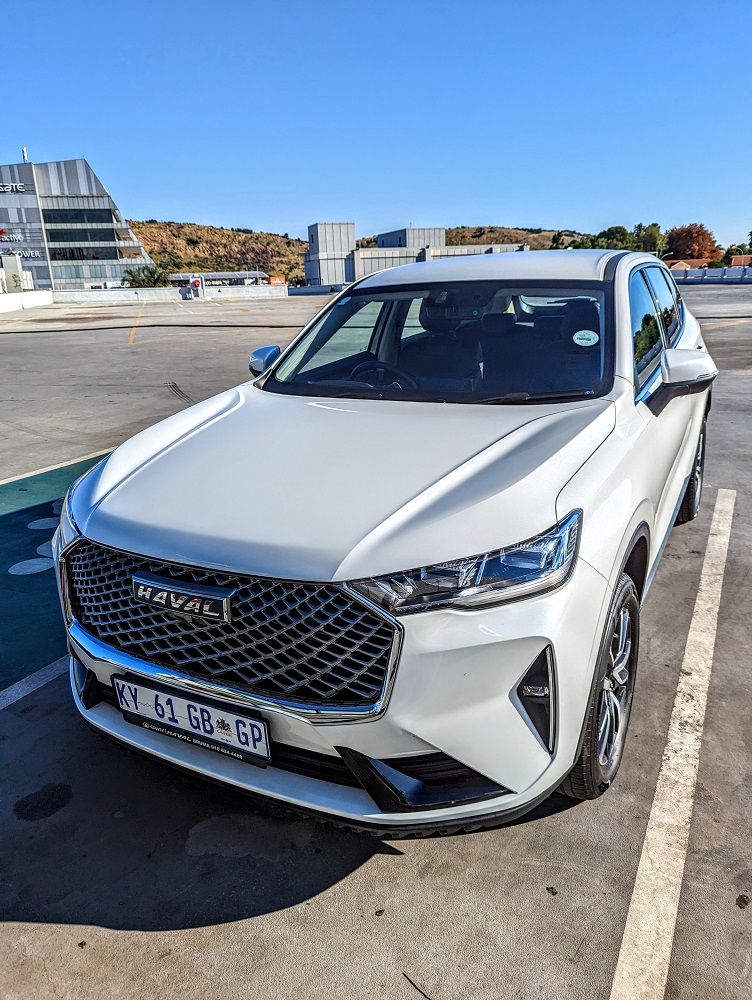
The roads in Kruger were in much better condition than I’d expected, so you could in theory do a self-drive safari in a car. Having said that, I’d recommend renting an SUV instead for a couple of reasons.
First, although the roads are in great condition, there are some sections of dirt roads where things can get a little more bumpy, so you’ll likely have more comfort in an SUV than a car.
Second, in an SUV you’ll be sitting higher up in the vehicle than you will be in a car. Those extra few inches of height could come in handy when it comes to spotting animals.
2) Go Slow
I’m someone who likes getting from A to B in the quickest time possible. When on safari though, that’s not a great strategy. There are posted speed limits in the park that you’ll obviously want to adhere to, but even then you might not want to drive as quickly as that.
It can be hard to spot animals in the distance, so if you’re driving too quickly there’s an increased likelihood that you’ll miss them, especially shorter animals like lions, cheetahs, leopards, etc.
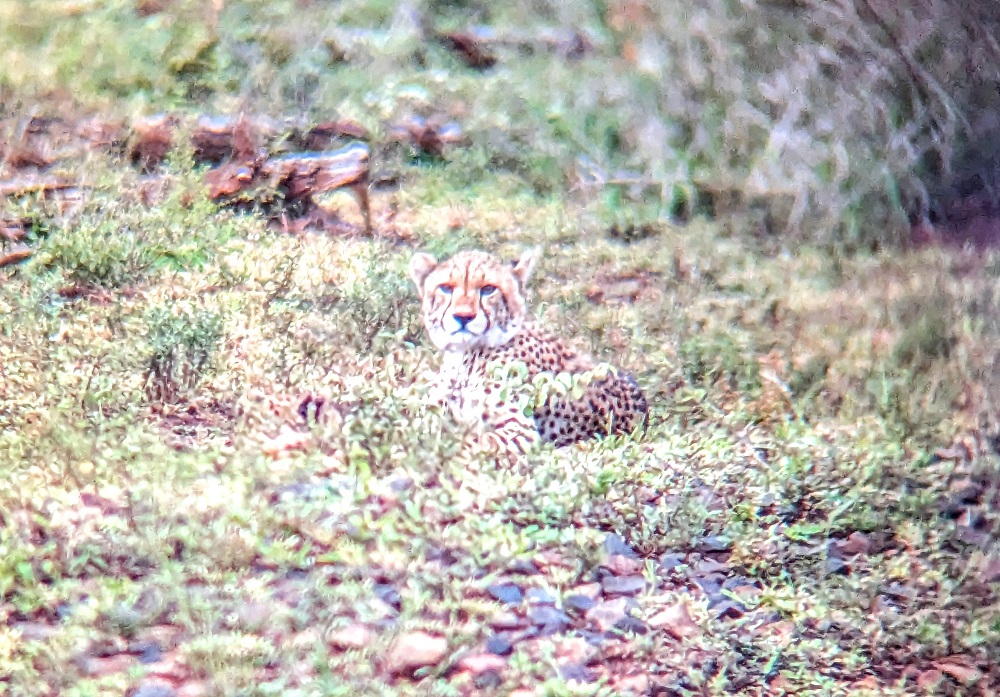
3) Set Realistic Expectations
Kruger National Park is very big – it’s about the same size of Israel. Unless you rush through the park as quickly as possible, you’re only going to see a small fraction of it, even if spending a week there.
To give you a sense of its size, here’s a map of the lower half of Kruger.
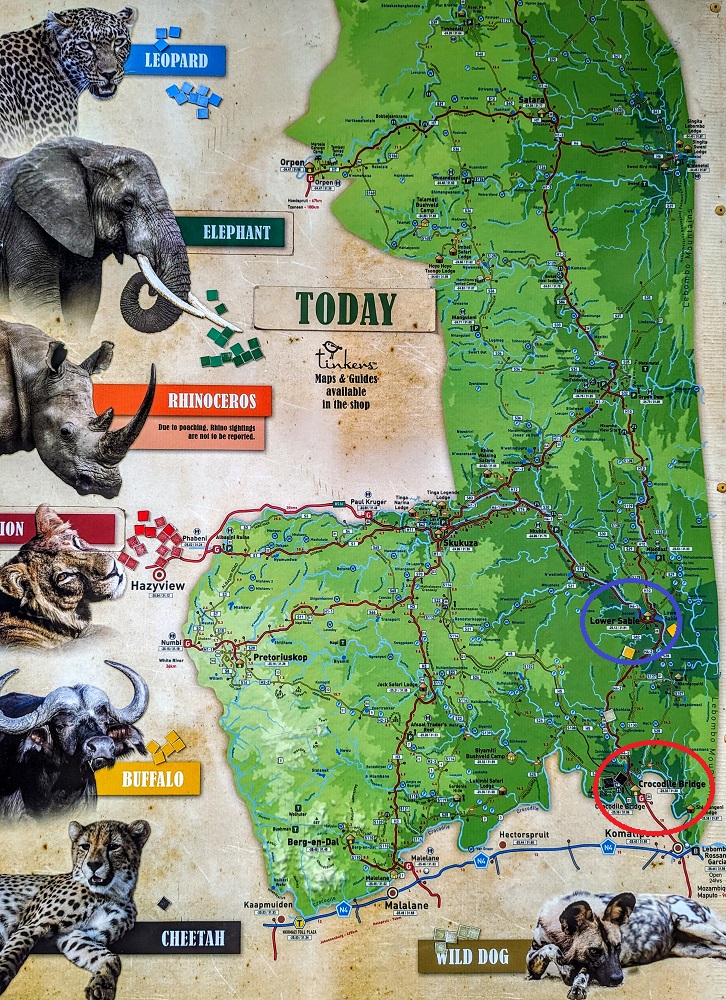
The closest entrance to where we were staying in Marloth Park was the Crocodile Bridge gate which I’ve circled in red. The furthest north we drove into Kruger was the Lower Sabie camp circled in blue. With that map being only the bottom half of Kruger National Park, you can see that we only saw the tiniest part of the park, although we did also explore the Malalane/Berg-en-Dal area in the southwest corner.
You’ll therefore need to set realistic expectations for how much of the park you’ll be able to see. If you were to stay at one of the camps in the park (e.g. Lower Sabie), you’d potentially be able to see more of the park. Even then, with the speed you’ll be driving at and the number of times you’ll be stopping to look at animals, you probably won’t get very far!
That doesn’t mean you won’t see much. Despite mostly sticking to the roads between the Crocodile Bridge gate and Lower Sabie, we saw pretty much every animal we were hoping to see with the exception of leopards. There were leopards there – in fact, our friends saw several of them the day after we left – we just got unlucky.
At the entrance gates there were helpful signs displaying the distances (in kilometers) and travel times to get to various camps and other gates. It’s important to bear in mind though that those are the travel times if driving straight there without stopping. We spent ~3 hours driving from Crocodile Bridge Gate to Lower Sabie so that we could stop to view animals – about triple the 1 hour 10 minute time listed on the board to drive that distance.
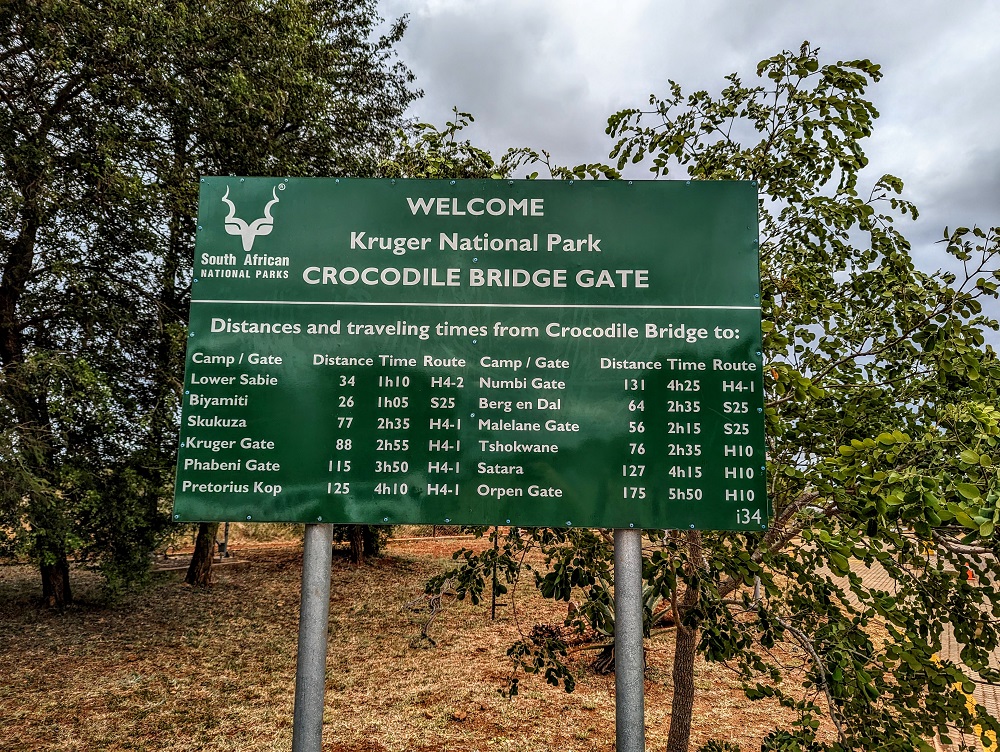
3) Always Be Scanning
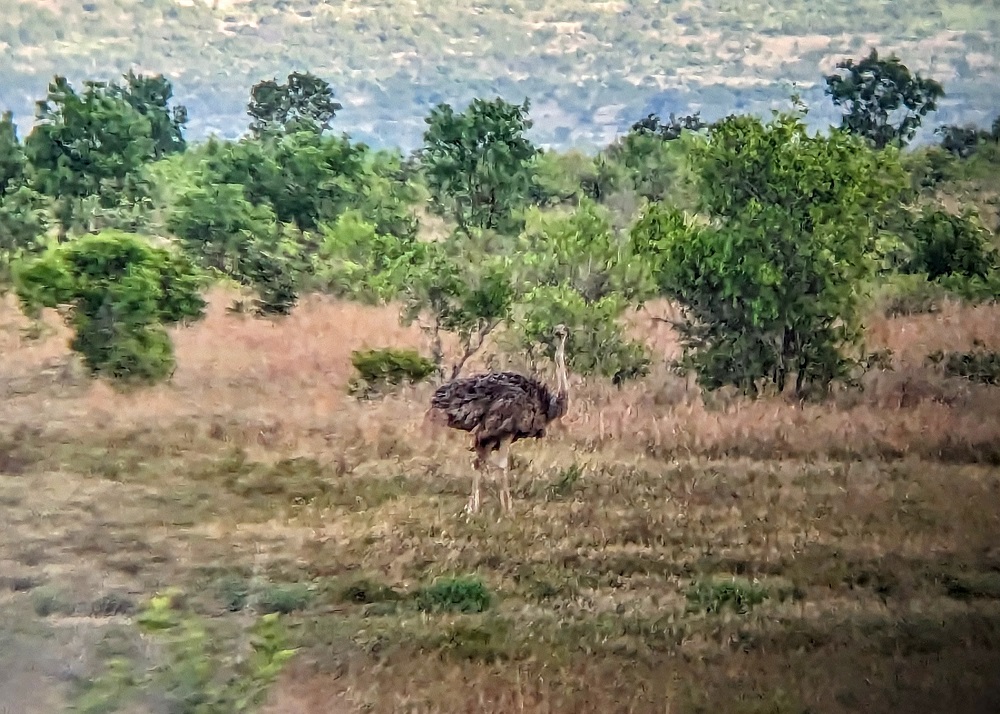
Going on safari – particularly a self-drive safari – can be tiring due to constantly being on the lookout for animals. It’s important to always be scanning for animals though because you never know when you might spot one. It often seemed to be at random times when we’d spot something cool in the distance that would’ve been easy to miss.
Shae’s mom and stepdad joined us in South Africa, so there were four of us in the car. That was ideal because it meant we had two people on each side of the SUV looking out. If there’ll only be three of you, I’d recommend having the third person sitting behind the driver rather than the passenger seat. With the driver also having to focus on the road, it’s better to have someone else helping to look for critters on that side of the road.
4) Use The Restroom Before Setting Off
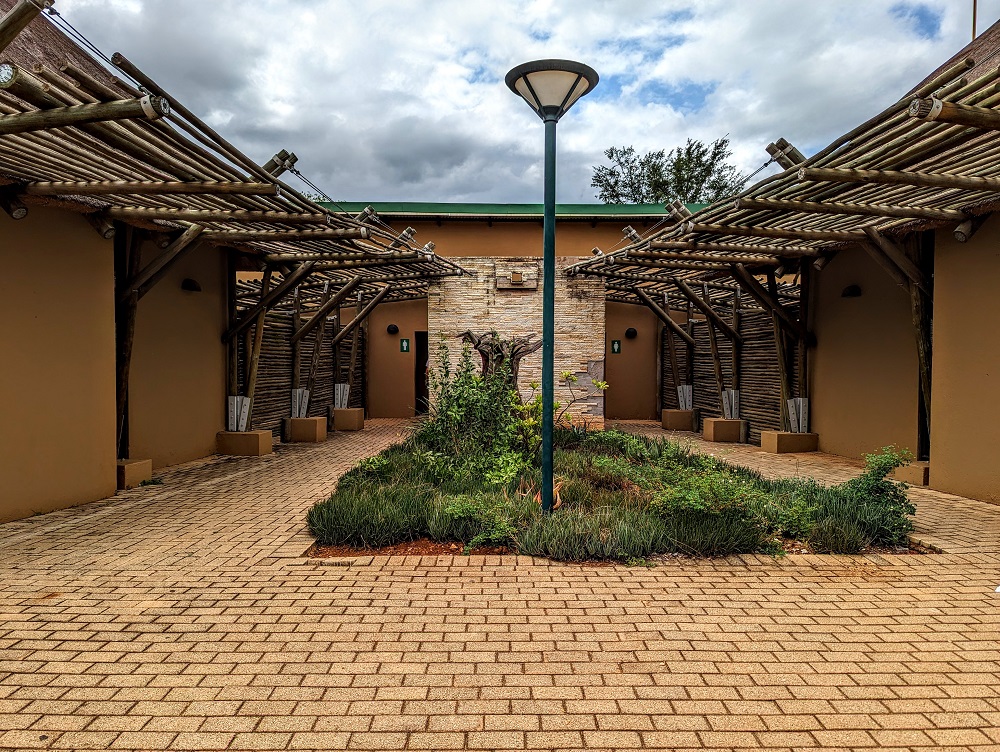
We only entered from a couple of the many gates at Kruger, but the two we used – Crocodile Bridge and Malalane – both had restrooms at the entrance.
Use them!
For safety reasons, you have to stay in your vehicle while driving through Kruger other than some specific spots where you can get out. Driving from the entrance to anywhere with a restroom (i.e. one of the camps inside the park) will generally take longer than you’d expect, even if they’re not very far distance-wise. That’s because you’ll be looking for animals, stopping when you see them, etc. It would therefore be a shame to spot a kill happening or something like that, but having to drive on because your bladder can’t wait.
5) Stretch Your Legs
Although you can’t get out of your car at random places in the park due to the danger of wild animals, that doesn’t mean you won’t have opportunities to get out of your vehicle and stretch your legs.
For example, there are camps throughout the park with restrooms, restaurants, shops, etc. About halfway between Crocodile Bridge and Lower Sabie there was also a game viewing hide where you’re allowed out of your vehicle and I imagine there are additional hides in other parts of the park.
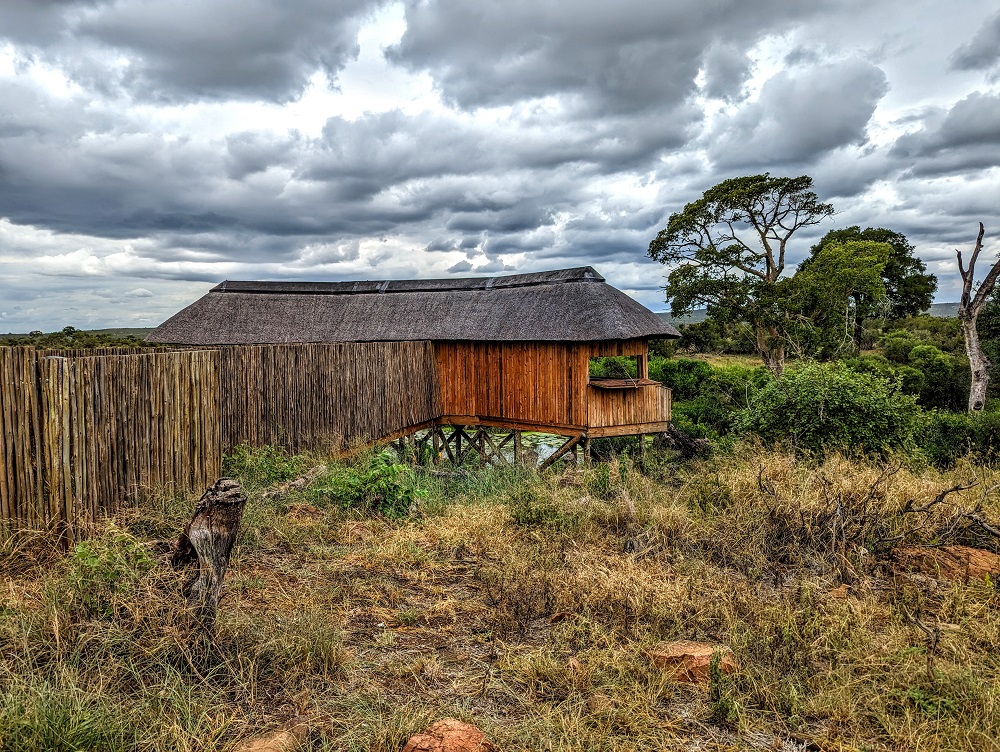
I imagine that in the evening the hide is a great place to stop at because it’s by a water source and so you’d hopefully see animals there as the sun goes down. We stopped at the hide a couple of times but didn’t have any luck seeing animals; it was a great opportunity to get out and stretch our legs though.
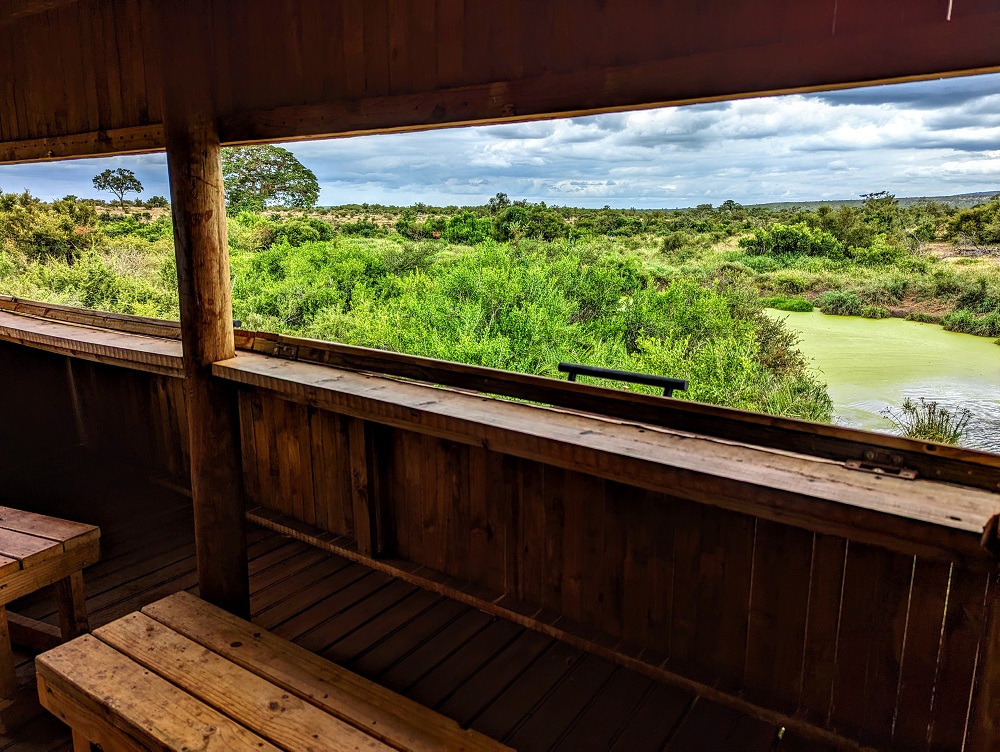
6) Download Offline Google Maps
When entering the park we were given a map, but apparently those aren’t always provided. It’s therefore worth downloading offline maps of Kruger National Park in Google Maps so that you can see where you are and get directions even if you don’t have any internet connection.
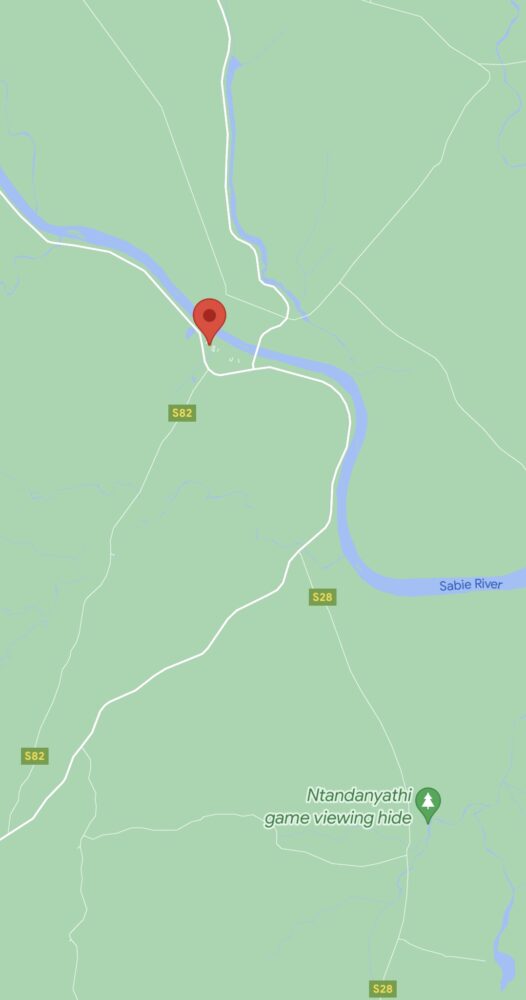
Check out this post for how to do that: Google Maps: How To Download Offline Maps (And Why You Should)
7) Decide The Best Time To Visit
Shae and I visited Kruger in late January/early February which had some benefits, the primary one being that it was shortly after birthing season and so there were lots of baby animals around. If you’d like to see baby animals, early in the year is a great time to visit.
It’s also South Africa’s rainy season which has its pros and cons. The rainfall means the park is more green and lush which can make it a prettier time of year to drive around the park. However, the rain can cause flash floods, roads becoming impassable, etc., so it could have a negative impact on your visit. We got lucky as it wasn’t too rainy while we were there, but there were some torrential downpours about a week after we left which meant some roads in the area got washed out, bridges couldn’t be driven over due to high river water levels, etc.
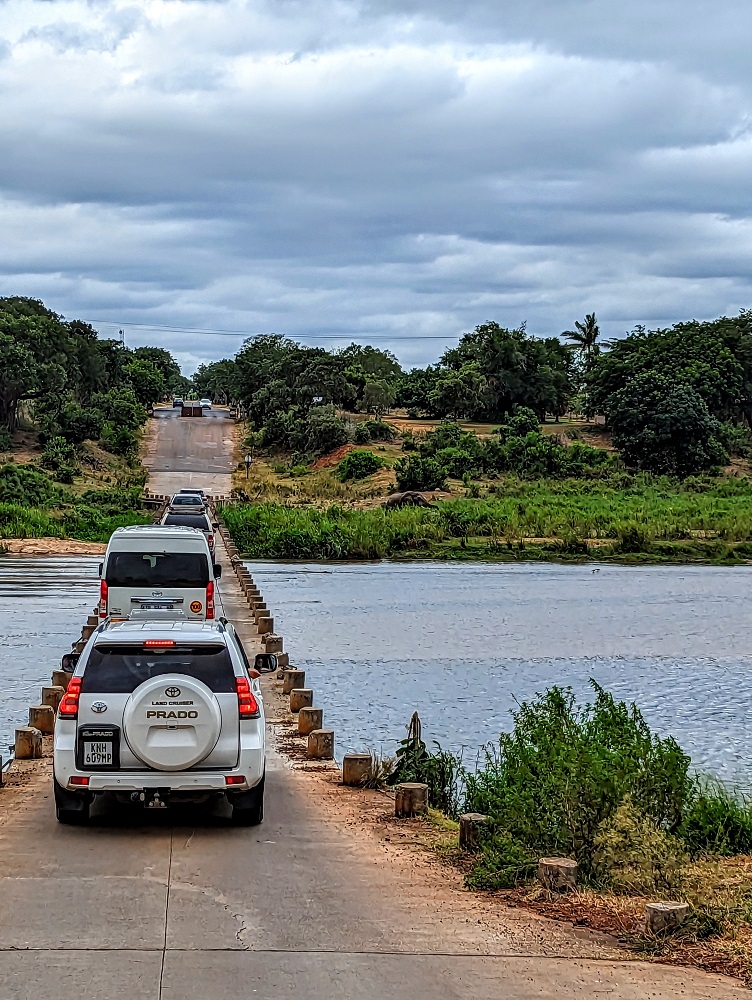
Visiting during the dry season has its pros and cons too. The lack of rain means everything is dry and so isn’t as pretty or vibrant. The lack of rain also results in less vegetation which can make it much easier to spot animals.
8) Take Binoculars
We own a pair of binoculars which we’d bought a couple of years ago. Somehow though, we completely forgot to pack them for our visit to Kruger National Park.
You can buy binoculars from stores at Kruger, but thankfully our friends who we were staying with had a couple of spare pairs we could borrow. Having binoculars was vital for a) spotting some animals in the first place and b) being able to see some of them more clearly, so I’d highly recommend having at least one pair with you, but ideally more pairs if there’ll be two or more of you.
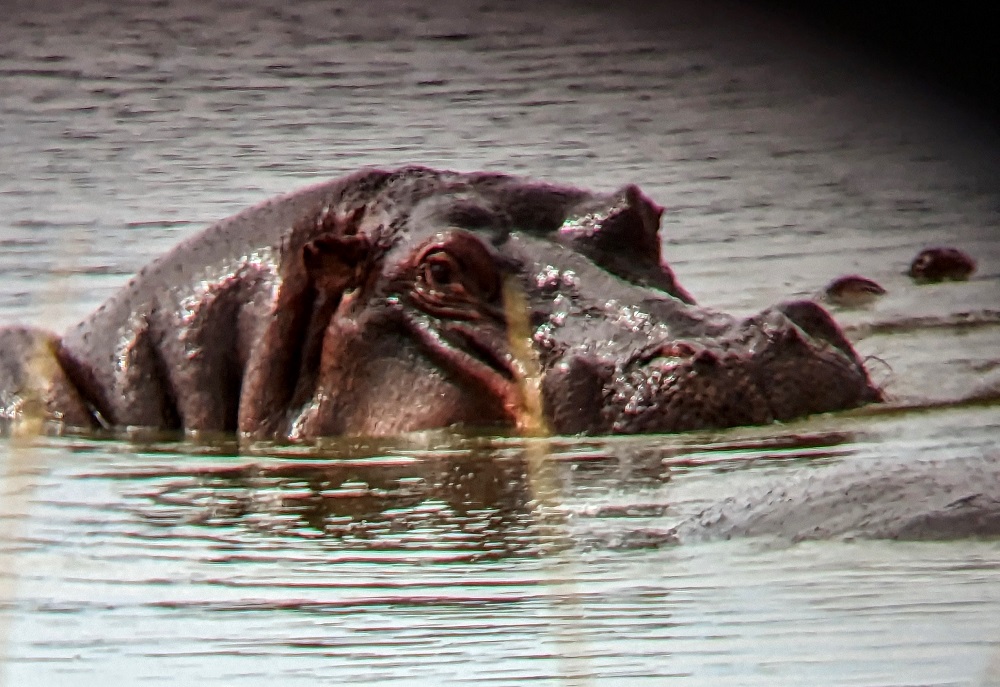
9) Make Sure You Have Enough Gas
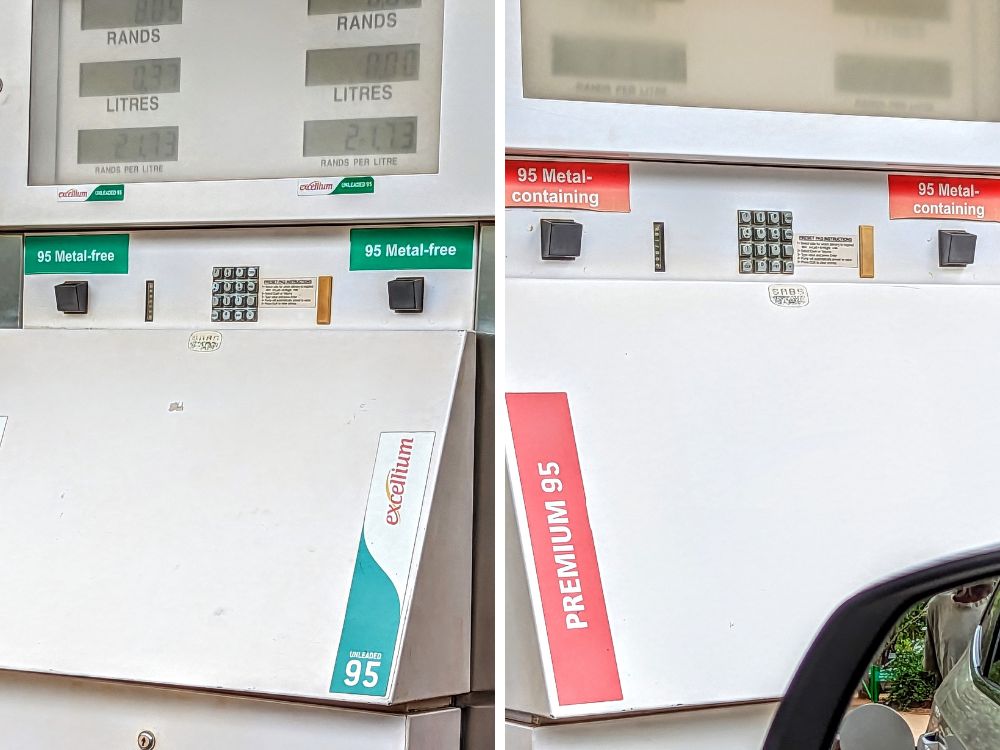
A park with lions, hippos, rhinos, etc. roaming everywhere isn’t somewhere you want to run out of gas with spotty cellphone connection. Thankfully there are gas stations at various camps inside the park, as well as right by some (or possibly all) of the entrance gates.
10) Take Snacks
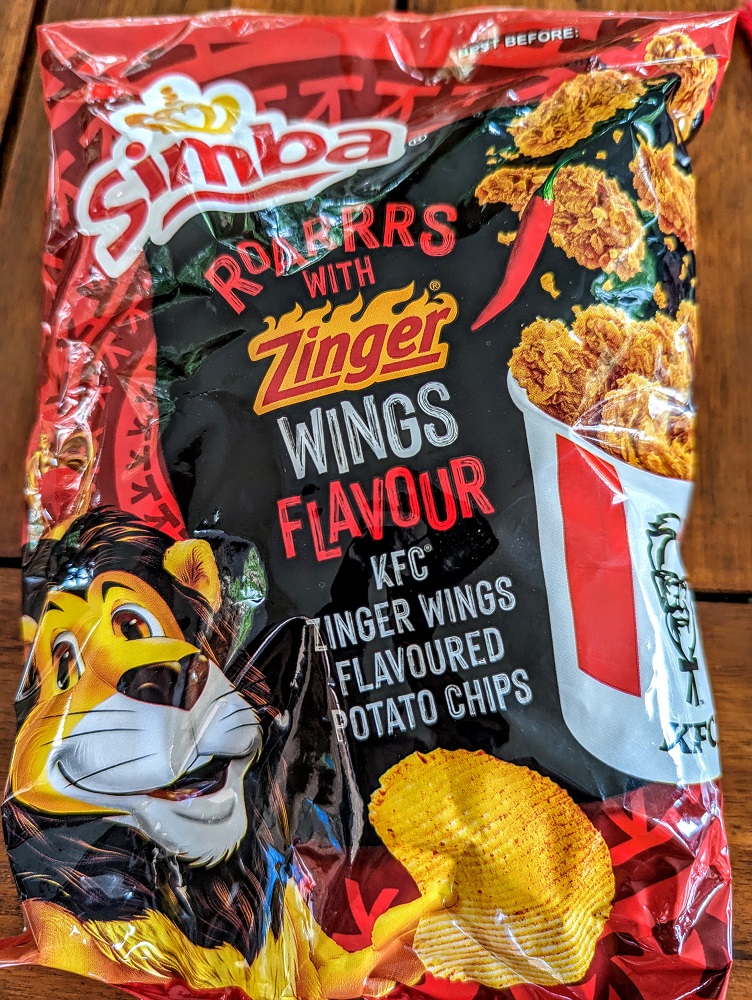
This tip is applicable whether you’re doing a self-drive safari or a guided one. Similar to not wanting to have to leave a great animal sighting because of needing to use the restroom, you don’t want to have to miss out on those experiences because you’re ravenous.
It’s therefore worth taking snacks with you. Don’t worry if you don’t remember until you get to the park; there are gift shops at the entrance selling all kinds of drinks and snacks which are surprisingly reasonably priced considering they have a captive audience. The camps in the park have restaurants and stores too, but it could be several hours until you get to one of those after entering the park.
11) Consider Getting An International All Parks Cluster Ticket
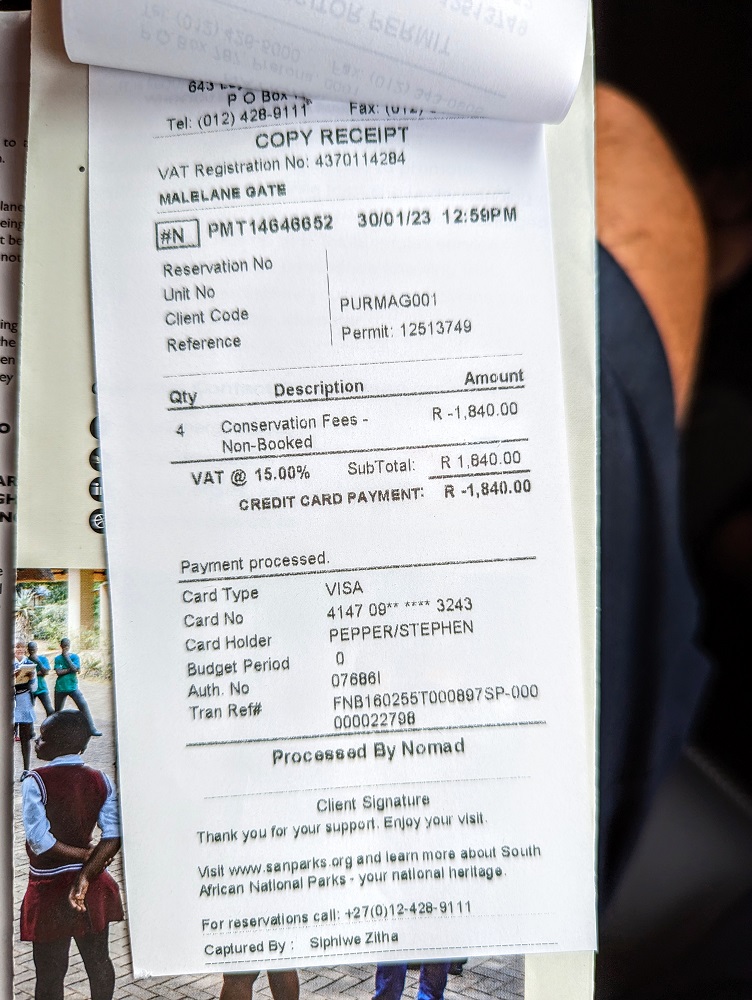
When doing a self-drive safari, beyond the cost of a rental vehicle and gas, your only cost is the entrance fee to Kruger National Park. The fee when we visited was ~$25 per adult and ~$12.50 per child per day which was fantastic value (you can find current rates here).
If you’ll be spending a week or more visiting Kruger and/or other parks and reserves in South Africa and will be entering the parks every day, you could potentially save even more by buying an International All Parks Cluster ticket. These are year-long season passes giving you unlimited entry to 80+ parks and reserves across the country. At the time of publishing this post, the pricing for International All Parks Cluster tickets is as follows (you can find current rates here):
- Individual – R3,575 (~$195)
- Couple – R5,585 (~$303)
- Family (1 adult + up to 6 children or 2 adults + up to 5 children) – R6,685 (~$363)
One of those annual passes for a couple therefore equates to six days of entrance fees if paying by the day. We paid by the day as we didn’t plan on visiting Kruger every day, but if we’d stayed for longer then that would’ve been the better value option.
12) Always Be Ready To Drive When Elephants Are Around
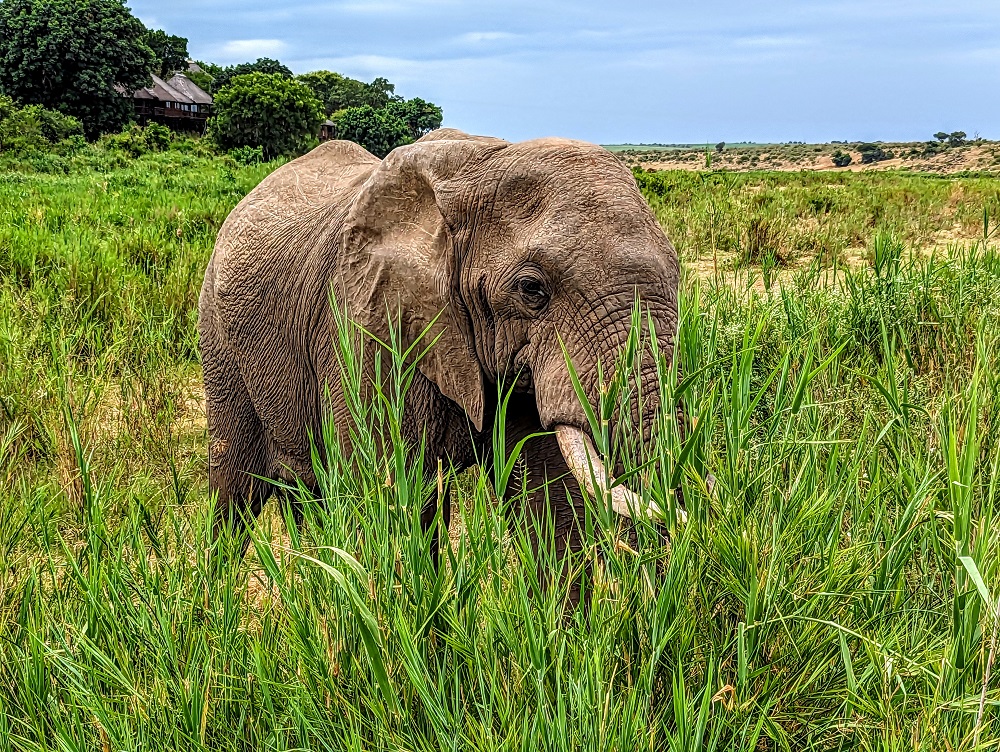
Hippopotamuses are one of the most dangerous animals on the planet, killing 500+ people per year. You’ll generally be safe from hippos in Kruger National Park though provided you stay in your vehicle.
We were advised that it’s more important to be aware of your situation when elephants are around. Although they’re not overly aggressive, their size and strength means they can cause damage to your car, turn it over, etc.
The advice we received from our friends was that we should keep the vehicle in drive when an elephant was nearby in case we needed to make a quick getaway. They also recommended being aware of our surroundings because if there was an elephant off to the side that we were focused on, we might miss an elephant approaching from behind.
We didn’t have any issues with elephants, but we took this advice to heart and so always made sure we were ready to get going if an elephant sighting suddenly turned scary.
13) Bring Your Passport
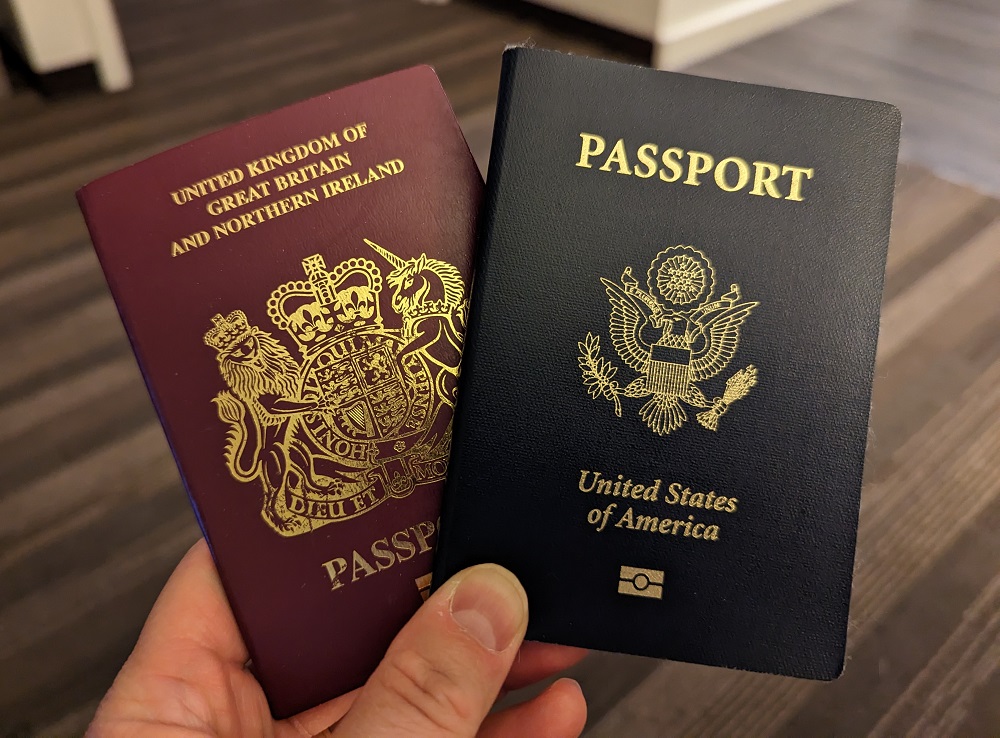
Bring your passports with you to Kruger National Park if you’re staying outside the park like we were. They didn’t seem to check our passports every time we visited, but they are, in theory, required.
Bonus Tip: Go On A Guided Safari
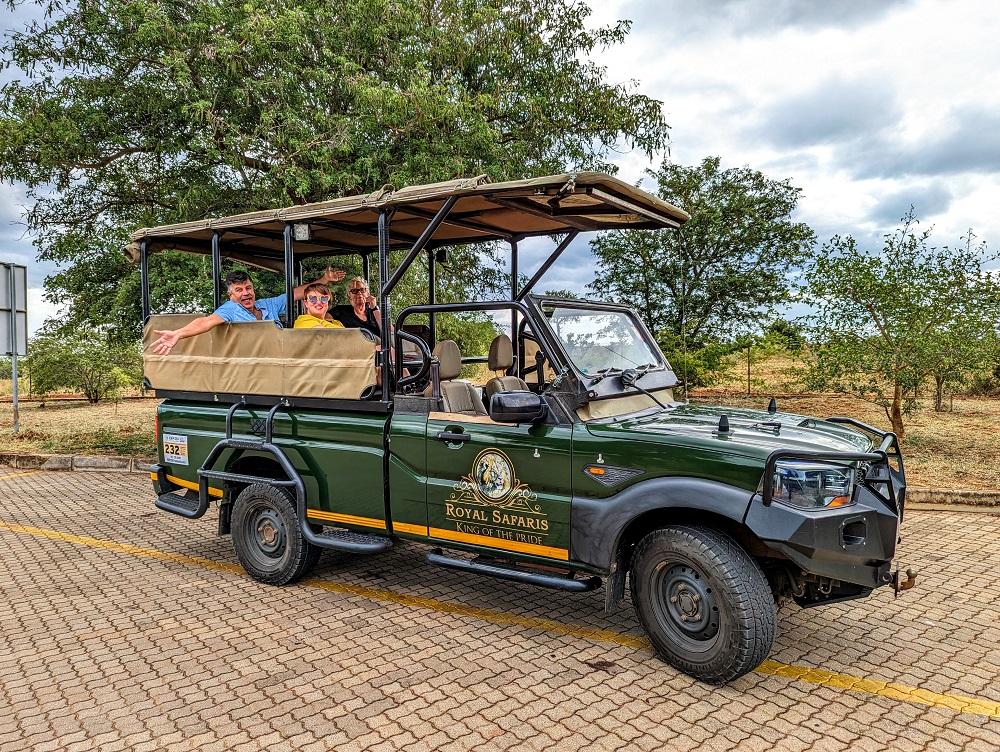
This post had been all about how to have a successful self-guided safari, but we’d also recommend doing some kind of guided tour at least once. Depending on the tour guide you use, it doesn’t have to be expensive. We took two guided tours – one regular and one that included dinner in the evening. The one that didn’t include dinner only cost ~$70 per person before tip.
There are several benefits to going on a safari with a guide. One of the main benefits is their knowledge – there’s so much information you can learn about the animals and birds in the park from your guide.
Another benefit is that they know what to be looking for, so several times our guides would spot something that we’d missed despite all four of us looking for animals. It’s also beneficial for the person who’d otherwise be driving as it’s less tiring for them.
Another key benefit is that guides stay in contact with each other over radio and on WhatsApp. They give each other tips about sightings which increases your likelihood of seeing hard-to-find animals. The only time I saw a cheetah was during one of our guided tours because another tour group gave our guide a heads up about a sighting.
Your Tips & Questions
Have you done a self-drive safari at Kruger National Park or elsewhere and have some tips of your own? If so, we’d love to hear them in the comments below. Please also feel free to ask any questions you might have and we’ll do our best to answer them.
See All Posts From This International Trip
- Lions & Quokkas & Scorpions, Oh My: A Month In Australia, South Africa & More
- We Were Denied Boarding To Australia – Here’s Why
- Flight Review: Lufthansa Business Class – Dallas-Fort Worth (DFW) To Frankfurt (FRA)
- Flight Review: Eurowings Discover Business Class – Frankfurt (FRA) To Mauritius (MRU)
- Some Thoughts On Mauritius
- Hotel Review: Hilton Mauritius Resort & Spa
- Hotel Review: Le Méridien Ile Maurice (Mauritius)
- Restaurant Review: Sunset Filaos In Pointe Aux Piments, Mauritius
- 20 Fun & Interesting Things To Do In Mauritius (+ Many Bonus Ideas)
- Hotel Review: Holiday Inn Mauritius Mon Tresor
- Flight Review: Air Mauritius Economy Class – Mauritius (MRU) To Johannesburg (JNB)
- The Awesome Drive Between Johannesburg & Kruger National Park
- 50 Animal Photos From Kruger National Park In South Africa Taken With Our Phones
- Kruger National Park: 13 Tips For A Successful Self-Drive Safari
- Elephant Kisses – Meeting Tswale In South Africa
- Kruger National Park: 30 Photos Taken With Shae’s Nikon Camera
- Doing A Kruger Park Bush Braai With Royal Safaris
- Marloth Park: Like Living In The Best Zoo Ever
- Hotel Review: InterContinental Johannesburg O.R. Tambo Airport, South Africa
- Flight Review: Qatar Airways Business Class (Qsuites) – Johannesburg (JNB) To Doha (DOH) To Miami (MIA)
- Hotel Review: Hyatt Regency Oryx Doha, Qatar
Did you feel really safe doing self-driven tours??Even at night???
Yep, we felt safe self-driving. We didn’t drive ourselves at night though; one of the two paid tours we did was in the afternoon and evening, so the photos taken in the dark were when someone else was driving. That guided tour had a couple of powerful handheld flashlights that helped us see animals in the dark; we wouldn’t have done a self-guided tour at night as we wouldn’t have been able to see anything other than what was right in front of our vehicle.
Safety is important glad you used a guide at night!
Great info. Now I just need to convince my wife to go.
One thing that astonished me was the leaded gasoline. I thought that had been extirpated years ago I was stunned to find out that it was supposedly gone as recently as a couple of years ago. Have you seen it elsewhere?
https://www.vox.com/future-perfect/22650920/leaded-gasoline-eradicated-public-health
Yeah, it was weird seeing that as I don’t remember seeing leaded as an option since the late 80s/early 90s in the UK. I guess South Africa might still have some old jeeps running on leaded?